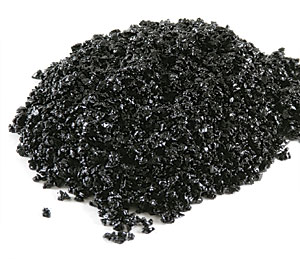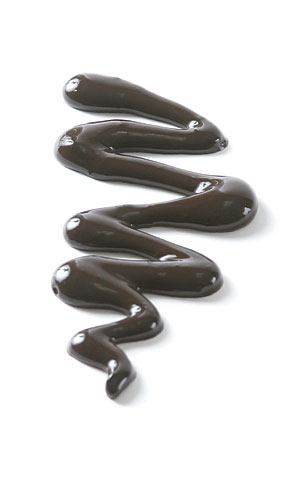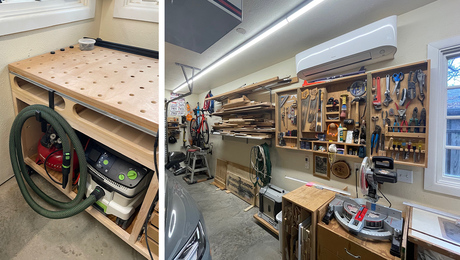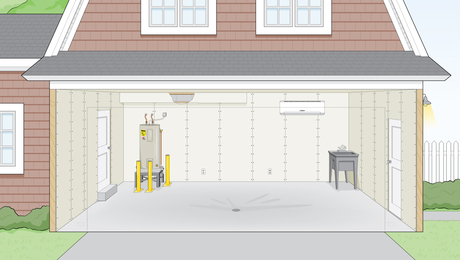When I discovered a small pothole outside my garage last spring, I knew that my neglect of the driveway over the past few years was about to have some consequences. Sure enough, an inspection of the driveway revealed cracks, depressions, rough spots, and even a couple more small potholes.
Rain and sunlight are the two biggest enemies of an asphalt driveway. Cracks in the surface allow water to get underneath, loosening the soil and promoting the development of potholes and depressions. Over time, sunlight causes asphalt to dry and become brittle, making cracks more likely to occur.
It’s important to fill cracks as they develop and to seal the entire driveway every few years. If your driveway needs more serious attention, though, you’ll need to use several different products to repair it and get it ready to handle the elements again. What you choose will be based on the type and extent of the damage.
Holes

Unlike the asphalt your driveway is made of, cold patch is ready to go right out of the bag or bucket. Available from all the companies listed in “Sources” (below), it is intended for filling cracks more than an inch wide as well as large holes with firm vertical sides that the product can push against. It won’t work in depressions. After filling a hole, tamp down the cold patch with a metal tamper or a 4×4, then cover it with a board and drive over it several times. If sufficiently compacted, cold patch should cure in two to four weeks, although at least one manufacturer recommends waiting six months before sealing the driveway.
Cracks

For filling cracks, there are two common options. Hairline cracks are best filled with a pastelike product that comes in a tube and is applied with a caulk gun. Examples include Latexite Crack Filler from Dalton Enterprises and Crack Stopper Rubberized Crack and Joint Filler from Gardner-Gibson. For wider cracks, use a liquid-type filler applied directly from a bottle or jug, such as Unique Paving Materials’s KoldFlo. The composition of these products is essentially the same, although the liquid-type filler is formulated so that it can flow freely. (Check manufacturers’ recommendations to know the limits of a particular product.) Alternatively, you can use Latexite Pli-Stix or Crack-Stix (same product, different lengths), a ropelike product placed in cracks and then heated with a blowtorch. Cure times for crack fillers range from four hours to two days, depending on the product and weather conditions.
Depressions

Dalton Enterprises’s Latexite Trowel Patch and Gardner-Gibson’s Crack Stopper Drive Patch can be used to fill small depressions. These mortarlike products, which are applied with a trowel, also can be used to smooth rough areas of the driveway and to feather the surface of a hole after you’ve filled it with cold patch. Unlike crack fillers, however, they are not sealants, so it’s especially important to seal the driveway after their installation. Expect these products to be fully cured in one to two days.
Sources
Dalton Enterprises (Latexite products) • Gardner-Gibson (Black Jack and Crack Stopper products) • QPR • Quikrete • Unique Paving Materials

























View Comments
It is essential to monitor your asphalt pavement. At any sign of cracking or deterioration, immediate asphalt repair strategies should be rendered. This will save a lot of time and money for more expensive repairs in the future.
https://corestonepaving.com
Asphalt is very common to concrete in that it is a mixture with aggregates. The only major difference is that asphalt uses a thick, gummy type binder that feels kind of spongy after being applied, while concrete uses cement as the binder and comes out very hard, almost like a rock unto itself.
https://www.stgeorgeconcreteco.com/asphalt-paving-contractors.html
Cracking is usually a really good indicator that it is time to get that driveway replaced. We have used many different contractors over the years and each one has told us that cracking is a bad sign in both concrete and asphalt.
https://www.tempeazcarpetcleaner.com/
In our experience cracking should be getting fixed immediately after noticing it. It is way cheaper in the long run to do concrete repairs before it is too late.
https://www.manhattanconcreteco.com/
Fissures and crevices appearing in a driveway can be a telltale sign that it's time to consider a replacement. Our experiences with various contractors have reinforced the notion that cracking in both concrete and asphalt driveways is a surefire indication of the need for a new surface.
https://www.champaignconcreteco.com/